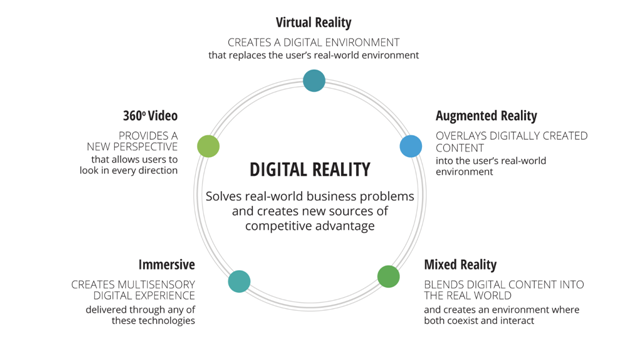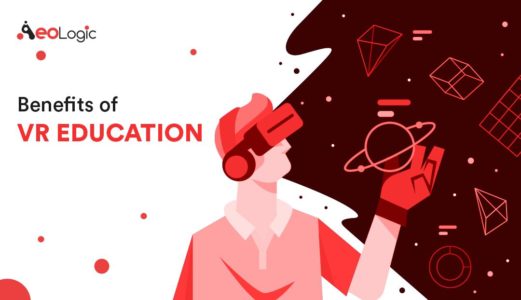It is easier to believe in what we see; the power of virtual reality for education lies in the visualizing opportunities, a spectacular innovation that amazes with endless solutions.
The opportunities to implement Virtual Reality in social good is huge, given how engaging, technologically benefiting, and profitable it could be, Virtual Reality has created an observant shift in the technological mainframe over the years. The whole experience of “being there” has made Virtual Reality interesting. The curiosity around this newly innovated way of communication, education, and interaction have changed the way how technology can be readily adopted by various educational establishments.
It has opened a gateway to new opportunities that can steadily change the whole dynamics of education systems adopted in developing countries. Virtual Reality has a great potential for education settings; new and collaborative avatars of teaching atmosphere have readily changed the way teaching is perceived by millions of children all around the world. The whole idea of creating this new educational resource for students of the developing countries will create a required and relevant bend in the current educational establishments.
Few Benefits of VR Education that Can Help Developing Countries:
- Virtual reality simulations can help students learn practical skills i.e., students learning ardent skills in realistic scenarios without having to face them in an uncontrolled real-life situation can be increasingly advantageous.
- Virtual Reality can spark students’ creativity and move their attention to architecture and design. This will help them explore more potentially profitable streams where they can earn and learn together as developing countries are rapidly investing in infrastructure.
- With VR, the whole learning outcomes can be changed specifically in distance learning mode. Virtual Reality educational programs will make degrees from higher universities like the University of British Columbia Law School, and others possible. Online chat spaces can be embraced by students where they can interact with others in classrooms and present lectures as well.
- New possibilities of advanced educational programs in developing countries will spike both interests and investments. With new programs in place that were previously not easily available in third world countries, students will be motivated to pursue quality education and invest their skills for the development of their own countries.
- Virtual Reality reduces the fear of presentation which means that the tech will enhance confidence and help students stay motivated and encouraged to perform and present.
The investment focuses on Virtual Reality: In 2016, Citi Analyst, Kota Ezawa mentioned that 2016 will be the year when Virtual Reality would officially gain the attention it deserves, and as a consequence, it would become $ 15.9 Billion industry by 2019. Adding to this assumption declared by Citi, the market for software, hardware, and the content will reach to clear $ 200 Billion by the year 2020. This is a clear indication that we are shifting from a benign universe (narrated in Brave New World) to a VR paradigm, as depicted in Ready Player One.
Digital Realities- Present Government Scenario
“A significant portion of developed countries, and eventually all countries, will have AR experiences every day, almost like eating three meals a day.” -Bill Gates
In this present time of constrained budgets, budgetary pressures had reduced workforce (2017 was evidence of this). Result? The government had to move to digital realities like AR, VR and other immersive technologies so as they can quickly mature from experimentation to industrial applications.

Image Courtesy- Deloitte
Since digital realities can help achieve performance gains, with a little assistance they can navigate the organizational, financial, and technological hurdles on the road to greater productivity. This is where AEOLogic can help them. How?
Barriers Indian Government is facing with VR and where AeoLogic would assist
Cybersecurity and privacy: Maintaining privacy is notably difficult in the present digital world. Higher security equals a higher cost, and governments will have to find means to obtain a balance between these two. Utilizing a cloud-based privacy system will be an apt solution, which AEOlogic excels at.
Legacy systems: More traditional systems will need to adjust and connect to the more modern technology, especially for data management. How can this be done? API solutions.
Conflicting requirements: Running test programs that demonstrate the applications of integrating AR/VR into any company’s processes will reduce both time and cost.
Financial sustainability: Cost is always an issue with modern technologies, but governments can defend the investments by tracking metrics and utilising the data to confirm the digital services’ ROI.
Virtual Reality, Augmented reality and other immersive technologies are indeed the school of the future, as it will be dramatically cheaper, and has the potential to serve large virtual institutions at one time, but will be a poor replica of the original setup.
Conflicting requirements: Running test programs that demonstrate the applications of integrating AR/VR into any company’s processes will reduce both time and cost.
Financial sustainability: Cost is always an issue with modern technologies, but governments can defend the investments by tracking metrics and utilising the data to confirm the digital services’ ROI.
Virtual Reality, Augmented reality and other immersive technologies are indeed the school of the future, as it will be dramatically cheaper, and has the potential to serve large virtual institutions at one time, but will be a poor replica of the original setup.

Manoj Kumar is a seasoned Digital Marketing Manager and passionate Tech Blogger with deep expertise in SEO, AI trends, and emerging digital technologies. He writes about innovative solutions that drive growth and transformation across industry.
Featured on – YOURSTORY | TECHSLING | ELEARNINGINDUSTRY | DATASCIENCECENTRAL | TIMESOFINDIA | MEDIUM | DATAFLOQ





